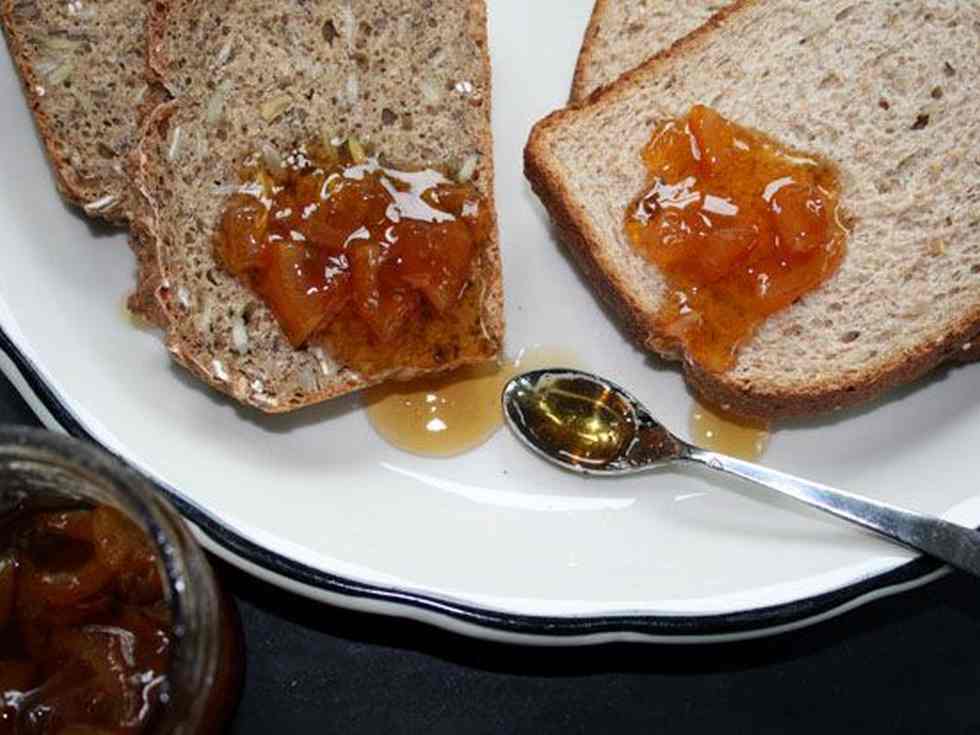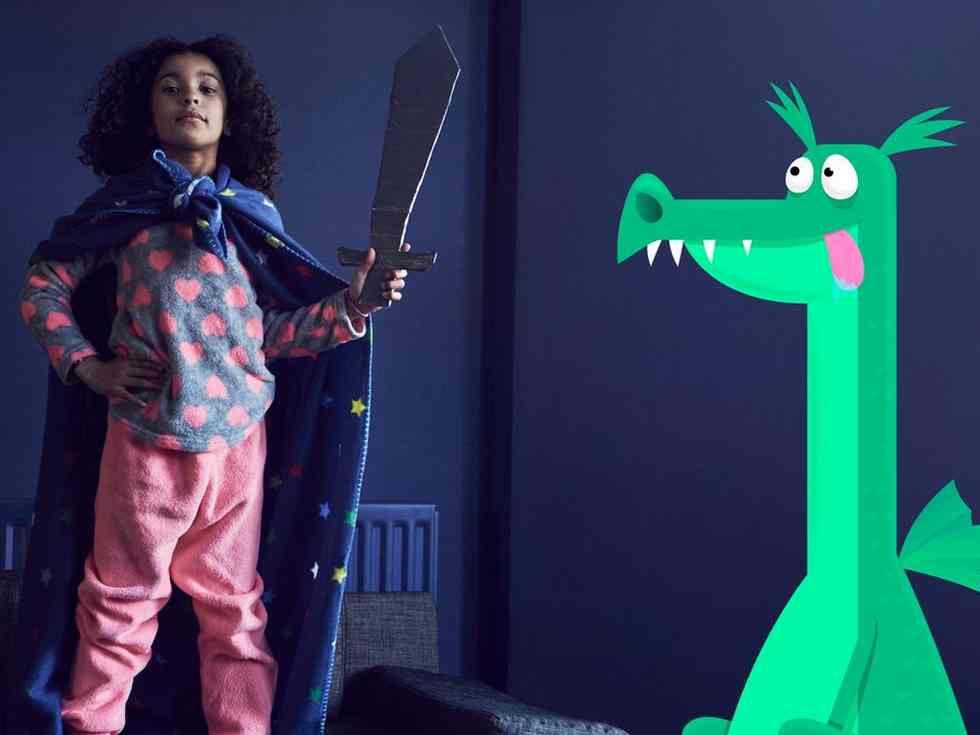
Someday after Ryan Pepin’s fourth birthday, a brand new good friend appeared in his life. "Robin was taller and stronger than my dad, might elevate a fridge, put it on his again, and run quicker than my dad whereas carrying the fridge," the now 35-year-old Forestville, California resident recollects. "My dad was my hero once I was slightly child, so it was enjoyable and stunning to my mother and father that my good friend might do all issues higher. Apparently, most of my conversations about Robin included driving bikes and the way he had the good inexperienced bike."
A barely anxious baby, Pepin grew up in a big household surrounded by quite a few cousins, uncles, aunts and two brothers. His mother ran a daycare, so different youngsters have been a continuing presence. "I believe Robin probably helped me really feel particular and distinctive and boosted my confidence," Pepin says. "He gave the impression to be an expression of every part I assumed was cool on the time and will do something that I wished to have the ability to do."
However by the point Pepin was 5, his good friend and mentor had disappeared. His recollections of their time collectively stay totally constructive. "I keep in mind Robin being an actual and superior presence in my life," he says. "My mother and father confirmed that I appeared to really have conversations with Robin and talked about my experiences as being actual." However they weren’t. Robin the refrigerator-carrying biker was — shock? — a figment of Pepin’s creativeness.
Contents
- What Is an Imaginary Pal?
- Imaginary Pals Over Time
- Are Imaginary Pals a Signal of Hassle?
- Or Are Imaginary Pals a Signal of One thing Nice?
- Taking Imaginary Friendships Into Maturity
What Is an Imaginary Pal?
“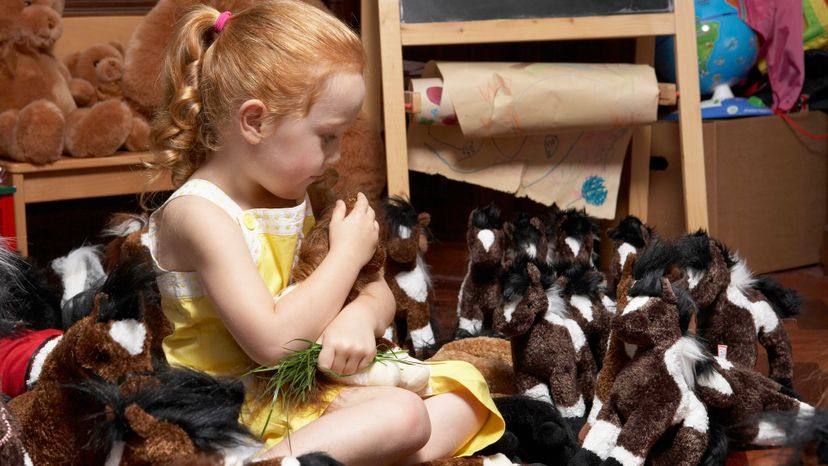
Objects, like stuffed horses and teddy bears, can be thought of imaginary pals, too. Maarten Wouters/Getty Photos
Whereas it might seem to be an easy idea, formulating a hard-and-fast definition for an "imaginary good friend" could be difficult. For one factor, children aren’t precisely identified for being essentially the most dependable self-reporting analysis topics.
"Speaking to a toddler about an imaginary companion, you haven’t any thought what is going on to come back out," Tracy Gleason, Ph.D., a developmental psychologist at Wellesley School, instructed Science Friday. "They’re going to inform you one thing and you will assume ‘what are they speaking about?’ We have stated, ‘do you have got an imaginary companion?’ they usually’ll assume, ‘what an incredible thought!’ So, they will say ‘Sure. Sure, I do!’ And so they’ll report on some imaginary companion they’re making up proper on the spot."
Usually, psychologists divvy up the broad class of imaginary pals into two teams: invisible friends and personified objects. "It is a made-up or unreal companion that sometimes gives consolation or help to a toddler," says Dr. Sheryl Gonzalez Ziegler, the founder and managing director of The Baby & Household Remedy Middle at Lowry in Denver. "When it is an invisible good friend, it is sometimes extra like, ‘Annie is my pal and he or she goes in every single place with me and you’ll’t see her, however I can see her.’ There are additionally imaginary pals which can be personified objects. So, like a teddy bear. The connection there’s often a extra caretaking type, but it surely does not must be a doll — it may be something."
However even these categorizations can get complicated. Whereas some consultants solely take into account invisible friends "imaginary," others are adamant that omitting the tangible object selection overlooks an necessary section of fantasy pals (assume stuffed animal Hobbes from the cartoon strip "Calvin and Hobbes")."Objects could be imaginary pals, too, as a result of the kid assigns animate qualities to an inanimate object," Ziegler says. "They imagine that the objects can converse or transfer so that’s the reason the time period ‘imaginary’ could also be assigned on this case."
And these objects aren’t simply restricted to these discovered on toy retailer cabinets. Gleason says she as soon as heard a couple of baby who fashioned a detailed relationship with a can of tomato paste, for example [source: Groskin].
However marriage and household therapist Robin Walker of Valley Baby Remedy in Woodland Hills, California, says most youngsters have an imaginary friendship to assist them relate to others. "A psychologist named Donald Winnicott developed the concept of ‘transitional house,’" he explains. "Winnicott stated existence is about how we relate to one another — others in our life are our prime motivating drive."
The issue, Walker explains, is that it is inconceivable to ever actually be on another person’s degree and relate to them utterly. "The easiest way to do this is thru transitional objects or transitional house," he says. "It is the hole between us that we are able to by no means fairly bridge. We will each relate to it, and due to this fact, relate to one another."
Primarily based on Winnicott’s concept, Walker says an object like a teddy bear or, nicely, a can of tomato paste, can present a significant connection between two individuals — or between youngsters and the world. In some instances, transitional objects may even act as short-term substitutes for necessary figures. "They’ll create one thing that takes the place of their mom or father if one is not there, or if [the child] has a way of loneliness, they will all the time have the item and it is like having mother or dad," Walker says.
Imaginary Pals Over Time
“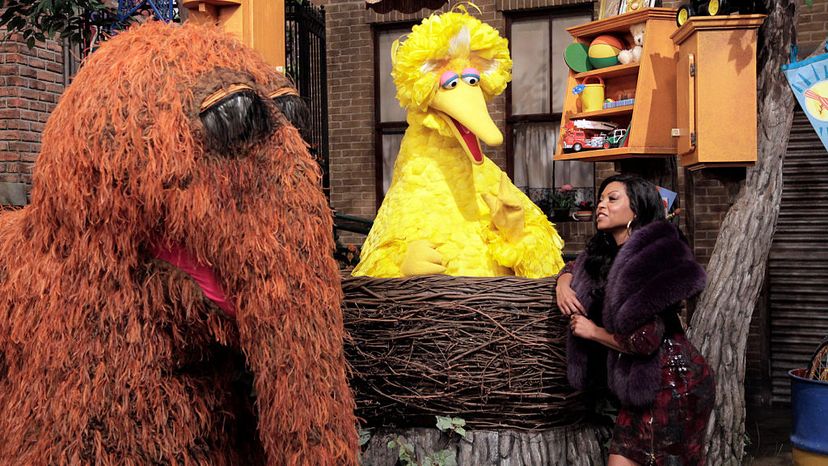
Sesame Road’s Snuffleupagus is probably top-of-the-line identified ‘imaginary pals.’ Till the present’s seventeenth season in 1985, Huge Hen was the one character who might see Snuffy. NBC/Contributor/Getty Photos
Traditionally, imaginary pals have gotten one thing of a nasty rap. Earlier than the Nineties, nearly all of psychologists thought of imaginary pals as indicators of serious bother. "They thought these youngsters have been bizarre," Dr. Marjorie Taylor, Ph.D. and head of the Creativeness Analysis Lab on the College of Oregon instructed the Globe and Mail. "Perhaps sensible, however socially troubled or shy or no matter. And all that’s utterly fallacious."
Additional investigation supplied extra perception into the true nature of imaginative children, and the outcomes have been typically far completely different from consultants’ preliminary assumptions. "Researchers have been learning cognitive and social growth in youngsters and found that over 50 p.c of kids had an imaginary good friend and that really they have been largely social, empathetic, vibrant children," Ziegler says. "It started much more analysis that began to debunk the ideas that this was a psychiatric sickness however reasonably a reasonably normative a part of baby growth."
As analysis has progressed, it is turn out to be clear that widespread tradition illustration of imaginary friendships that convey unstable children and adults escaping via fantasy (see: "Donnie Darko,""Drop Lifeless Fred,""Struggle Membership," and so on.) are simply Hollywood creations based mostly on outdated science. Kids who create imaginary companions actually like fake play, fantasy they usually’re additionally very social [source: Groskin].
Are Imaginary Pals a Signal of Hassle?
“
Don’t fret in case your baby has an imaginary good friend and an incredible social life. Consultants say there’s most likely nothing to fret about. Peter Cade/Getty Photos
In accordance with household therapist Walker, simply having an imaginary good friend is not sufficient to actually point out something a couple of kid’s psychological state. "It’s important to have a look at the entire of the kid to find out if a toddler is nicely or not," he says. "So, their social life turns into a barometer for the kid’s emotional wellness. If they’ve an imaginary good friend but in addition have an incredible social life, then there’s most likely nothing to fret about. Now we have to be social creatures, we’re wired for it. When it is an issue, that‘s an issue."
Pepin says the time he spent along with his imaginary good friend Robin solely complemented an in any other case full and energetic social life. "My mother and father describe my relationship with Robin as a enjoyable side of my creativeness," he explains, "however he wasn’t round the entire time and did not seem to be one thing that was central to my childhood." Pepin’s mother and father additionally described him as busy, with a number of actions and interactions with different youngsters and household, as nicely. He simply occurred to have a cool imaginary good friend on the aspect.
Pepin’s expertise is typical for youths with imaginary friends, as is his short-lived relationship with Robin. "Children virtually all the time develop out of it," Walker says. "It does not imply they’re all the time going to be there; it is a second in time. You’ll by no means say one dialog with a nasty child is a part of their character and now they’re damaged ceaselessly; that is ridiculous. It is a dialog that is a part of the entire."
However whereas imaginary pals are current, do their creators really know they’re imaginary? "That is the fallacious query to ask; that is a grownup asking a query {that a} baby does not relate to," Walker says. "Should you say to a 3-year-old, ‘are you conscious this good friend is imaginary?’ they will not even register that. It is sort of like asking, ‘does a fish see water?’"
Denver’s Ziegler has a barely completely different take, however agrees that the imaginary side of those friendships does not detract from their significance. "We expect that whilst early as age 3 or 4, youngsters know it is fake," she says. "Nonetheless, that does not make the actual consolation they get any much less necessary to them." She says some individuals equate imaginary pals to being a cultural factor. "In our tradition, now we have Santa Claus or the Easter Bunny or leprechauns for St. Patrick’s Day; we all know these items aren’t actual, but it surely does not make them any much less magical as a result of they’re an necessary a part of custom."
Thirty-year-old San Francisco resident Emilia Varshavsky Shapiro has fond recollections of her imaginary pals Mary-Anne and Michelle, who popped up throughout her elementary faculty years. Though Shapiro’s household immigrated to the U.S. from Russia when she was 4 1/2 years previous, she does not imagine tradition shock performed a job within the growth of her fantasy friendships. "I do not assume being an immigrant had any impression on that," Shapiro says. "I believe imaginary pals are a ‘child’ factor in any tradition and I would guess much more so for American children than Russian children due to the emphasis on creativity whenever you’re little."
Shapiro’s proper: Imaginary pals are common. "Should you observe youngsters as much as the age of seven, it is most likely within the neighborhood of 60 to 65 p.c, and if you happen to solely embody invisible pals, it is extra like 38 p.c," Taylor says of American children. Comparable outcomes have been noticed throughout a variety of ethnic teams, however exhausting numbers are troublesome to come back by. Nonetheless, consultants are fairly certain imaginary pals are on the market in all elements of the world [source: Groskin].
"On this nation, we research youngsters in a different way than elsewhere," Ziegler says. "Generally it is regarded as an American child factor, and I do not assume it is fairly as excessive in different international locations. However my thought is that this: Kids are youngsters. The environment and tradition form our viewpoints, however I do not assume our tradition encourages imaginary pals in any means. My instinct and my educated guess might be that the charges are about the identical wherever on the earth, but it surely’s simply not studied."
Or Are Imaginary Pals a Signal of One thing Nice?
“
Information reveals that youngsters who’ve imaginary pals are typically extra engaged, extra artistic and likewise sometimes spend much less time on TV and screens. JGI/Jamie Grill/Getty Photos
Shapiro’s proper about one other factor: Creativity performs a giant position in imaginary friendships, and it might really be one of many main payoffs. Ziegler agrees and says having the capability to make up a good friend and act out numerous eventualities can signify wholesome growth and progress in youngsters.
"A number of the knowledge reveals children with imaginary pals are extra engaged, extra artistic and likewise sometimes spend much less time on TV and screens," she says. "Boredom is a crucial a part of mind and baby growth as a result of then children begin arising with stuff." So, she says, boredom permits them the means to do cool issues. Like create make-believe individuals and pals. "I like to emphasise that to oldsters: Do not schedule all their time and do not simply put a display screen in entrance of them," Ziegler explains. "In the event that they’re bored, encourage them to determine one thing to do."
Apart from bettering a toddler’s capability for creativity, a make-believe good friend can also present a protected house for exploration and growth in different important areas like empathy. "Empathy is the flexibility to think about what one other particular person is feeling or feeling what one other particular person is feeling," Walker says. "So, having an imaginary good friend can enable a toddler to train their capability to really feel what another person is feeling." Kids with out artistic imaginations continuously lack that capability, which is important to their talents to be compassionate and empathetic.
And whereas imaginary pals could also be helpful within the growth of those essential emotional and mental points, in addition they can simply be actually enjoyable. "I am an authorized play therapist, and for us, it is a kind of play," Ziegler says. "I’d begin to have issues if the imaginary play will get in the best way of precise pals and connections. That is a crimson flag. However for most youngsters, they could play with imaginary pals quietly of their rooms or take them on journeys, however are nonetheless fairly engaged in every part and are OK."
Walker agrees: play issues. "A simple instance is watching wolf packs or cubs play," he says. "It is a means for them to be taught to hunt and socialize and reside nicely in a pack. It is all about play after they’re very younger. The identical is true for youngsters. You do not be taught social abilities by 10 or 12, or if you happen to do, you be taught them by rote, which you are able to do, but it surely’s inferior to studying since you have been on the playground and also you figured it out. This is part of that."
Taking Imaginary Friendships Into Maturity
“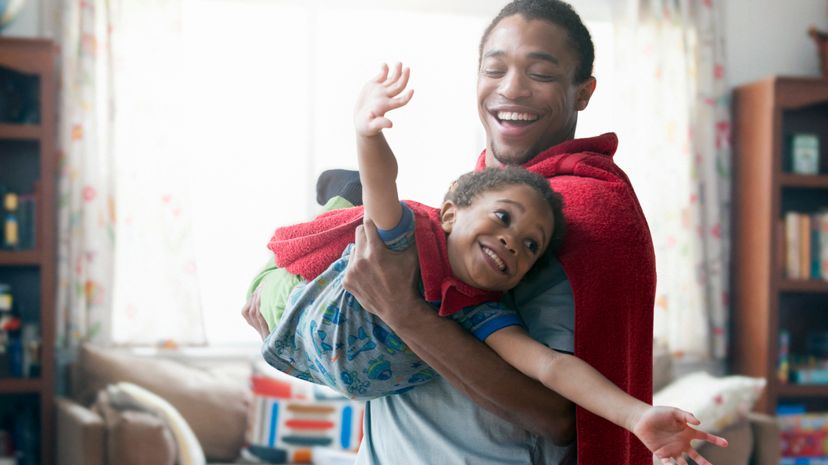
Consultants say mother and father of children with imaginary pals must be totally engaged and supportive of it. KidStock/Getty Photos
The query many adults have about imaginary pals is when do issues get bizarre?
"From what I do know, 7 is in regards to the age when the imaginary good friend both goes away or form of turns into an actual a part of the child’s life," Ziegler says. "It is in regards to the age when mother and father begin to go, ‘my child is in first grade now,’ and begin get slightly bit involved."
So, what if the made-up pal sticks round after a toddler’s seventh birthday? Or reveals up a lot, a lot later?
That was the case for 31-year previous Anne Hoffman. She did not have any made-up friends as a child, however she and her boyfriend at present take care of a number of stuffed animals that play fairly energetic roles of their on a regular basis lives. "Now we have 5," the Philadelphia resident says. "We began with two — slightly mouse and slightly cub. I moved in with my boyfriend after two years of lengthy distance, and as soon as we have been dwelling collectively, there was this heat and loveliness, and I simply began getting robust mouse vibrations."
A radio journalist, Hoffman started tapping into her voiceover expertise, and it was only a matter of time earlier than Mousey (in any other case often called Ms. Mouse) was born. Cubby the bear got here alongside quickly after, adopted by a number of different stuffed pals. "My private perception is that the mouse and cub are our interior youngsters," she says. "I did not have the simplest childhood, and a part of me most likely bought silenced or instructed, ‘hey, put that away, we must be adults proper now.’ I believe it is extremely wealthy as a result of it is like an on the spot connection to your interior baby, which is actually exhausting for adults to entry. Once I’m going via a tough time, I can ask, ‘how does the mouse really feel?’ and test in, and there are methods during which I can state a worry via the mouse that I am unable to say as an grownup."
From Walker’s perspective, Hoffman’s imaginary world could also be a manifestation of Winnicott’s concept. "For her and her associate, that is the transitional object," he says of Mousey, Cubby and firm. "They’ve this factor they will relate to, at a distance or not."
Whereas few adults might have the artistic capability of Hoffman (or the center to cop to it), Walker says everybody talks to themselves, whether or not an imaginary good friend is there to bear witness or not. "All of us have occasions after we discuss to ourselves within the type of an interior monologue — even when we’re unaware of it. It is all the time happening and you’ll look at what it’s and the place it comes from," he says. "If the language is, ‘you are such a large number,’ or ‘how might you do this? You are so silly,’ you bought that from someplace, both a perception or expertise or one thing."
The query you must ask your self, he says, is "how true is it?" and "what if it is based mostly on one thing false from whenever you have been youthful and did not know higher?" An imaginary good friend will not be an inside monologue, however an exterior monologue that over the course of childhood turns into an inside monologue. If we’re speaking about youngsters in therapy, inviting their imaginary good friend into therapy is tremendous necessary to learn the way the kid is regarding himself or herself vis-à-vis the imaginary good friend, he says.
And what about adults attempting to handle the imaginary worlds of the younger ones of their lives? "They need to go proper together with it," Ziegler says. "They need to actually be totally engaged and supportive of it. Do not be afraid to ask questions like, ‘The place’s Annie? What does she need for breakfast? Does she need pancakes too?’ That may be very supportive to a child."
"It’s best to work together with them the identical means you’d work together with every other good friend or object or the rest your baby is doing," Walker agrees. "In case your baby loves pirates, you’ll be able to say, ‘What is going on on within the pirating world?’ There is no cause to not work together with it, and typically it is enjoyable! It is referred to as play, and dramatic play is tremendous necessary in baby growth."
Pepin, now a father of two, says he’d don’t have any downside going together with that recommendation. "I am not disturbed within the slightest about having had an imaginary good friend or the idea of my youngsters having them," Pepin says. In actual fact, his 3-year-old daughter and 1-year-old son appear to be following of their father’s footsteps. "My daughter has a really energetic creativeness and thinks she is a dragon at occasions, and or talks about the identical dragon — Gracey Dragon — as a separate entity," he says. "Gracey Dragon is a central character in our bedtime tales and my daughter will typically discuss and act out the tales as if she is Gracey Dragon. I might not be stunned if she had an imaginary good friend in a yr or so."

